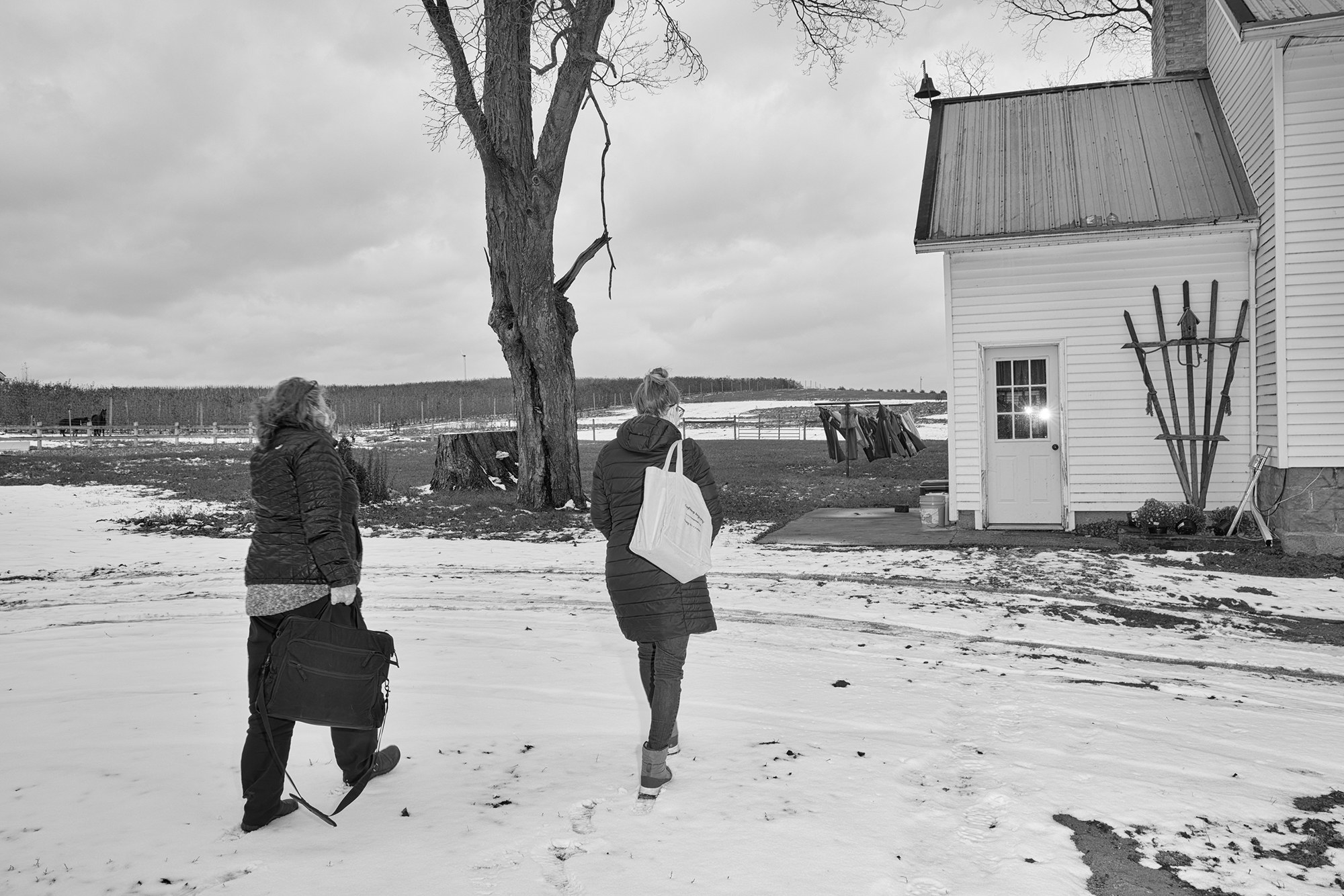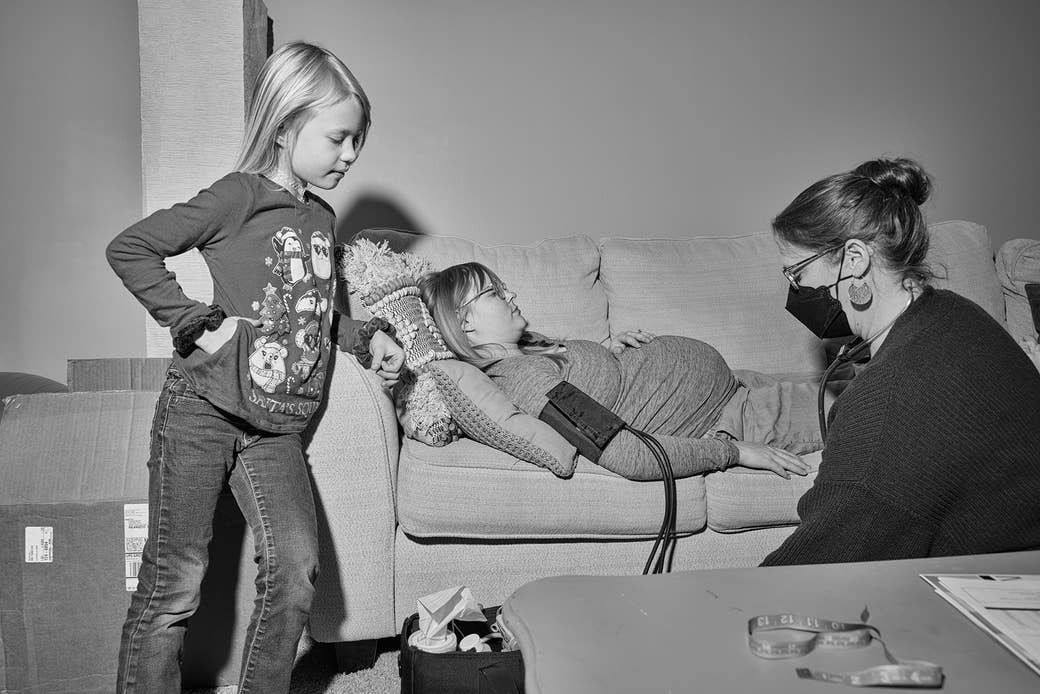
Our origin stories take place shrouded in mystery, wholly unique and always intense. I'm talking about birth — we've all done it, yet we only know about it from our parents' stories and, perhaps, photos. Most of us start our lives in a hospital (unless you're lucky enough to have a cool taxicab story). But the hospital as a birth setting was only sold as a standard of care within the past century — before that, almost everyone was born at home.
In recent years, more and more parents have returned to home births as an alternative to having a baby in a medical setting, which some have found impersonal and cold. This trend accelerated during the pandemic, when the process of delivering a human got mucked up like everything else, and hospitals limited visitors in an attempt to keep patients and staff safe from COVID-19.
Photographer Maggie Shannon spent part of the pandemic documenting births in California and Michigan, working with doulas and midwives as they waited long nights with people in labor. They described being overwhelmed with clients as home births both surged in popularity and became more regulated, which has led to a shortage of midwives.
Patrice Bobier, whom Shannon followed in Michigan, is careful to screen clients during their pregnancy for risk factors and to encourage high-risk pregnant people to seek birth within a medical setting. If the parent and unborn child are healthy, she provides birth tubs and encouragement while monitoring vital signs throughout delivery, and she works with local hospitals in case something goes awry.
"It's been different for years," Bobier said. "You have to be a certified professional midwife, which is a national certification that takes three to four years to complete. There are exams, you have to demonstrate ability and a multitude of skills. Everything you do has to be supervised. It's quite an involved process."

Bobier has been a midwife since the 1970s and helped set the standards for licensure in Michigan, which passed in 2017. When she started, there were few standards, and knowledge was passed by word of mouth. Bobier became an advocate for home birth after experiencing two disheartening deliveries in the hospital and researching alternative methods that were more patient-focused, which is also how many clients come to her office now.
"Women really should have the ultimate control over this work that they do," said Jennifer Holshoe, a former student of Bobier's who is now a full-time midwife and teacher herself.
Holshoe said she felt pressured by doctors to have a second C-section solely for liability reasons while pregnant with her third child. Her experience led her to work as a midwife and advocate for patient empowerment. "If [pregnant people] don't feel like they have the support to be an active decision-maker in this experience in their lives, then they're probably not in the right place," she said.
Empowering pregnant people by showing them what birth can look like — the intimate moments of exhaustion and the support — is part of what drove Shannon to create her project.
"One thing I keep coming back to with this story is just how little I knew about birth before starting it," Shannon said. "I think that's really unfair to women overall. I'm moving that line about how birth is perceived in imagery."
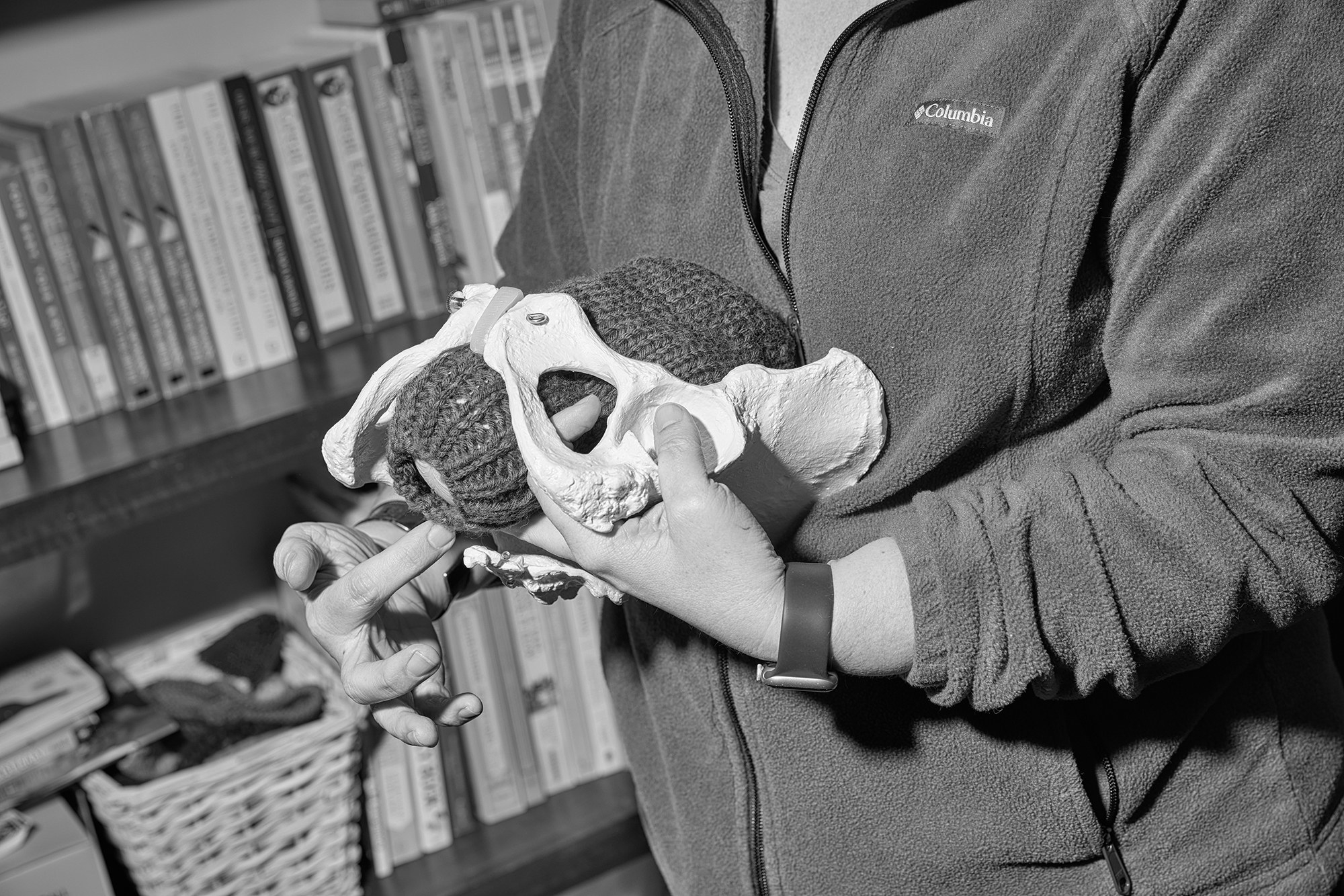
Refresh my memory of how this got started.
SHANNON: It started as a story exploring a rise in home births during the pandemic. A friend who's a doula in LA and I were chatting, and there were all these rumors floating around about women being separated from their newborns, and husbands and partners and doulas and midwives all being banned [from hospital rooms], so women were being forced to give birth alone at hospitals. [Editor’s note: New York City hospitals briefly blocked pregnant people from having their partner in the room during birth. For much of the pandemic, hospitals more broadly limited who could be in the room for birth to one support person.]
We were mulling on this idea of like, I wonder if people are going to turn to home birth as an option to avoid this. This was early March, even before LA went into lockdown, so when I first started making calls, everyone was excited to talk to me, but not really seeing a change. By that Friday, people started calling me back and saying that yes ... they were starting to get overwhelmed with this new interest and home birth. It was pretty intense.
What draws someone to want to give birth at home?
SHANNON: Some of the Amish women just really liked being in their own homes and having the privacy of giving birth. That was definitely the biggest thing for them, I think. I expected a much grander statement, but I think people like being comfortable and they like having it at their own house. A few people I talked to in LA had mentioned taking back control over their labor and their bodies, which I thought was really beautiful too. Having control and just being comfortable are the two main things.
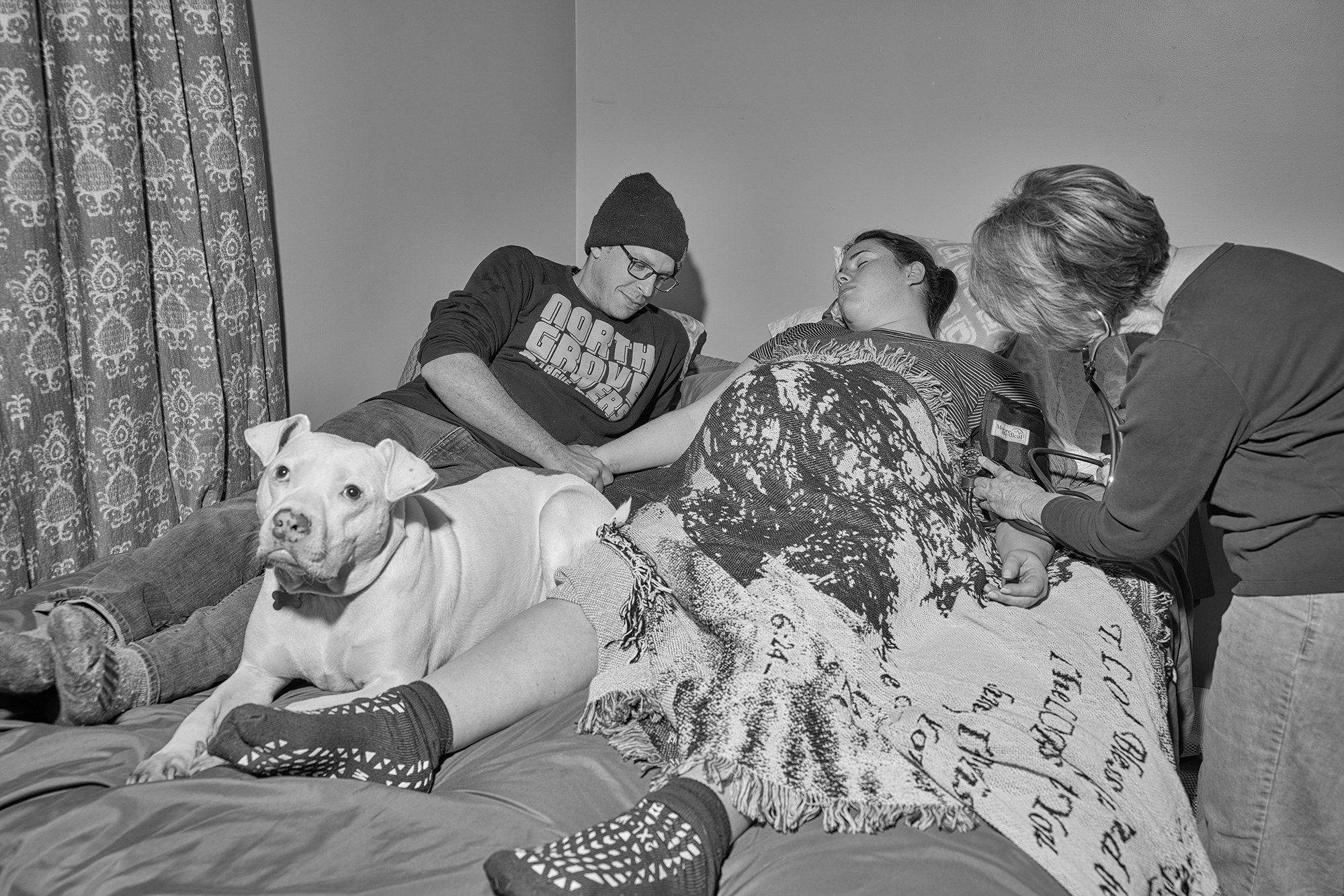
BOBIER: Too many times, it's an unhappy OB-GYN hospital experience. Sometimes it's because they want that semblance of control, which, you know, they don't really have in the long run because nobody can predict how labor is going to go. During the pandemic, it's been because they didn't want the hospital exposure or they wanted multiple people to be present for their birth. Sometimes it's because they trust their home and they trust their bodies and they don't want the interference. And we work with quite a few women with a history of sexual abuse. They want to know who is with them at such an intimate time.
HOLSHOE: Home birth with a [certified professional midwife] is really about working with birthing people who are healthy and low risk. Our goal throughout pregnancy is to be supportive and proactive and have all of the tools to be as healthy as possible to prevent risk factors from arising, mostly through exercise, lifestyle, nutrition, stress management, and then identifying when something has moved outside of the realm of being low risk.
The whole pregnancy and all of the prenatal visits are really geared around a lot of education and preparation and knowing what to expect. People are given the tools to really understand what's happening in their body and how to know that things are normal, other than just us assessing that and telling them. [We want] them to be really a part of that process, a part of the shared decision-making, for anything that comes up with tests and procedures.

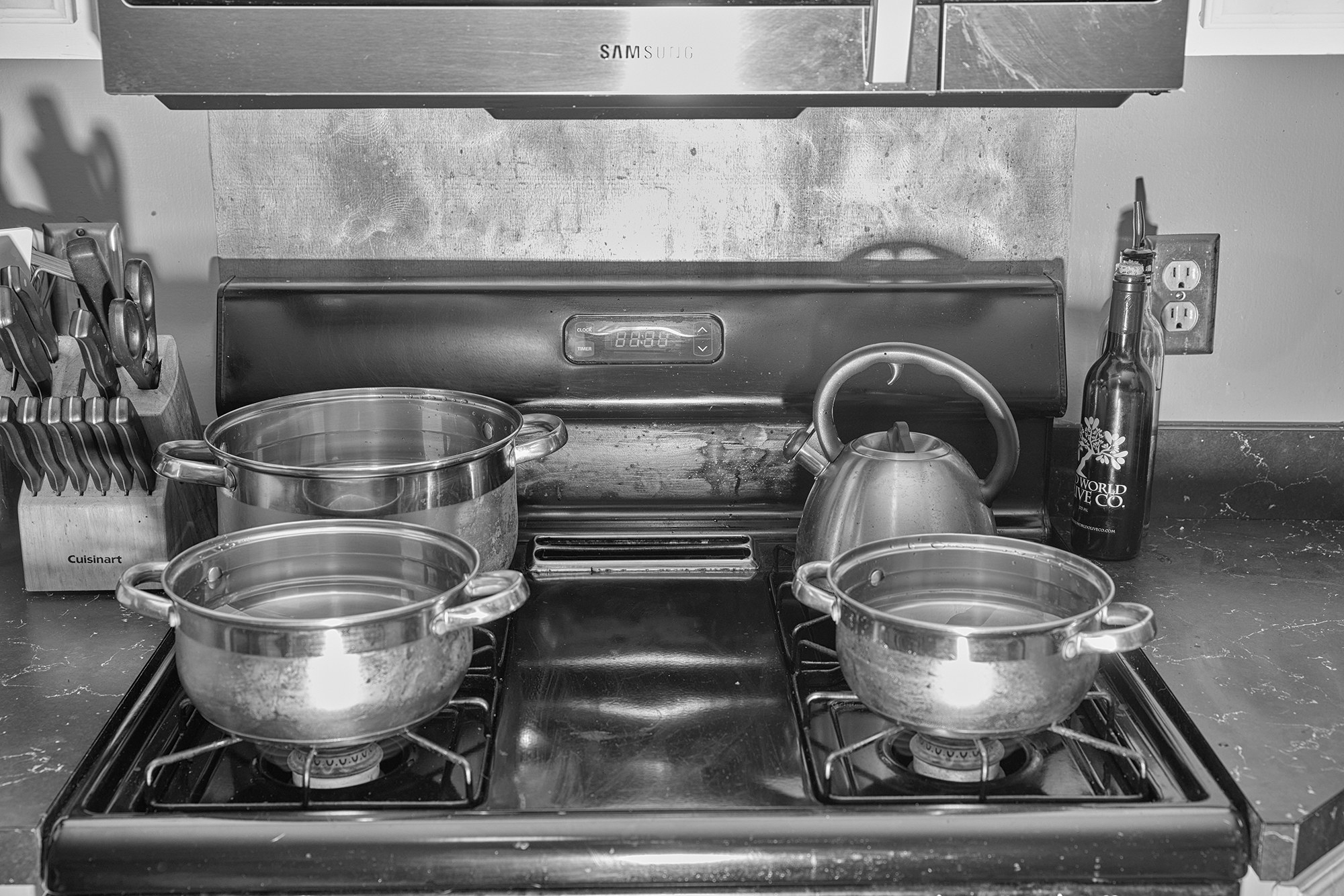
What are some of the misconceptions that people have when they come to you for the first time?
BOBIER: The absolute worst one is, I've had people sit in my office and ask if I do cesareans at home. Our society has been conditioned to think that a cesarean is just another way to get a baby out, rather than to think it is major abdominal surgery.
We provide a lot of support to our clients and a lot of education. All the way along the time that we spend with them, clients are given options and information and are encouraged to get information from other sources so they make decisions about their care.
Once the baby is born, are you also staying around for aftercare?
HOLSHOE: We really regard that very first hour after the baby's born as pretty sacred. Our initial goal obviously is to make sure that Mom's not bleeding too much, that the baby's breathing well on their own, and they're very stable. And then to make sure that the baby can start feeding and have as much skin-to-skin time and uninterrupted time between mother and baby as possible. Once the baby has nursed well, we'll do a full newborn exam and check the baby over from head to toe and assess how Mom is doing, see if she needs any repair, if she needs any sutures for a perineal laceration.
We have a pretty good rate of women not needing any repair, which I think is a big, really big difference between medicalized birth. I think women being at home and not having the adrenaline of, and pressure of, feeling the need to push their baby out as quickly as possible really allows that to be a lot more normal, so it's not very common that I need to suture.
We end up staying about two to three hours after the baby's been born, and then by that point, everybody's usually ready for sleep. We tuck Mom in her bed and we head home, but we're still really on call for that first week. We come back and see the baby at 24 hours of age, and we provide all three parts of newborn screening that are conducted in the state of Michigan.
We come back three to five days after the birth again and check in at their home, and then follow up postpartum care in our office at two weeks and six weeks postpartum. But moms know, especially for feeding issues, if they're having difficulty or any concerns about how their recovery is or how the baby's doing, that they can call us in between those visits.

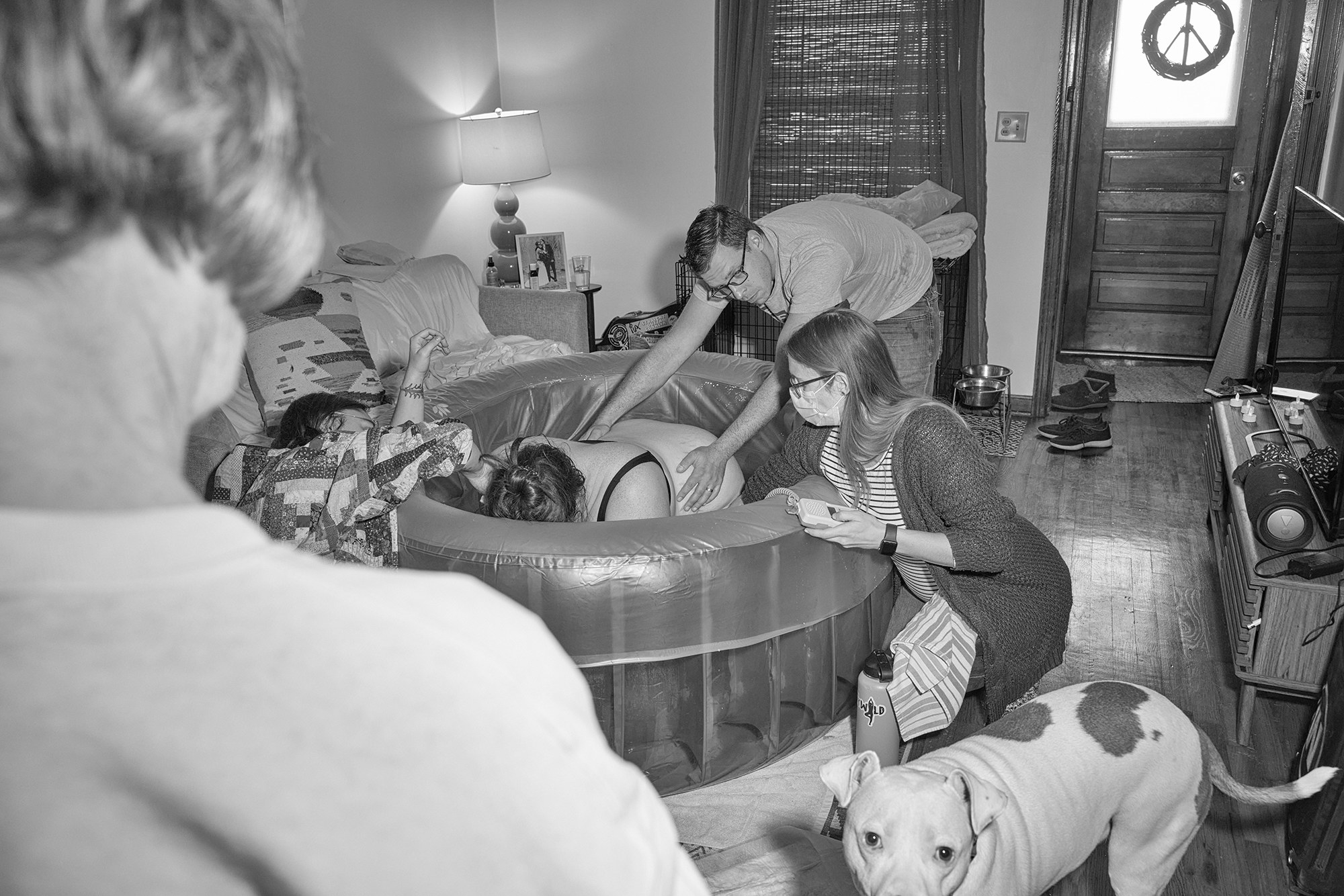
Are there things that you would want the wider public to understand more clearly about home birth or birth in general?
HOLSHOE: In my younger days, I just wanted to believe that birth could always be normal and that it could always be beautiful. And I still believe that, but at this point in my career, the way I view my work as a midwife, beyond support and encouragement, is to be prepared for when things aren't normal, for too much bleeding, helping a baby breathe.
It is a very, very intense experience that we have to keep a balance in our minds about, for those very, very small percentage of the times when it isn't normal anymore. There is always risk in birth, no matter where it takes place. There's different risks in the hospital. I want people to know and trust that birth can be safe. I wouldn't do this work if I didn't believe that home birth was safe. My goal is not that people have a home birth; my ultimate goal as a midwife is that women are healthy, that women are safe both physically and emotionally, and that babies are healthy and safe.

